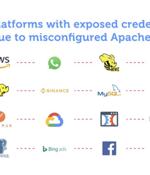Security News

A long-term spear-phishing campaign is targeting employees of major corporations with emails containing PDFs that link to short-lived Glitch apps hosting credential-harvesting SharePoint phishing pages, researchers have found. Instead, the malicious activity propagated by the PDFs is a link to Glitch apps hosting phishing pages that included obfuscated JavaScript for stealing credentials, he wrote.

Learn how to detect phishing on LinkedIn and protect yourself from it. Abusing LinkedIn is one of those techniques that is very effective because a lot of professionals use and depend on LinkedIn for their activities or work relationships.

Cisco has released security updates to address critical security flaws allowing unauthenticated attackers to log in using hard-coded credentials or default SSH keys to take over unpatched devices. "A vulnerability in the Telnet service of Cisco Catalyst PON Series Switches ONT could allow an unauthenticated, remote attacker to log in to the affected device by using a debugging account that has a default, static password," the company explains in an advisory published yesterday.

There's a new scam making the rounds on Discord, through which cybercriminals can harvest Steam account information and make off with any value it contains. Researchers flagged a new approach as noteworthy because it crosses over between Discord and the Stream gaming platform, with crooks offering a purported free subscription to Nitro, in exchange for "Linking" the two accounts.

Microsoft on Thursday disclosed an "Extensive series of credential phishing campaigns" that takes advantage of a custom phishing kit that stitched together components from at least five different widely circulated ones with the goal of siphoning user login information. Phishing kits, often sold as one time payments in underground forums, are packaged archive files containing images, scripts, and HTML pages that enable a threat actor to set up phishing emails and pages, using them as lures to harvest and transmit credentials to an attacker-controlled server.

On Wednesday, Verizon's Visible - an all-digital, uber-cheap wireless carrier - confirmed what customers have been complaining about on Reddit and Twitter all week: They lost control of their accounts; had their passwords and shipping addresses changed; and some got stuck with bills for pricey new iPhones. Visible is aware of an issue in which some member accounts were accessed and/or charged without their authorization.

Cybersecurity researchers on Monday discovered misconfigurations across older versions of Apache Airflow instances belonging to a number of high-profile companies across various sectors, resulting in the exposure of sensitive credentials for popular platforms and services such as Amazon Web Services, Binance, Google Cloud Platform, PayPal, Slack, and Stripe. "These unsecured instances expose sensitive information of companies across the media, finance, manufacturing, information technology, biotech, e-commerce, health, energy, cybersecurity, and transportation industries," Intezer said in a report shared with The Hacker News.

Twitch says that no login credentials and credit card numbers belonging to users or streamers were exposed following yesterday's massive data leak. The company added that the attackers could gain access to the stolen data due to a faulty Twitch server configuration change.

While investigating a misconfiguration flaw in Apache Airflow, researchers discovered many exposed instances over the web leaking sensitive information, including credentials, from well-known tech companies. Apache Airflow is a popular open-source workflow management platform for organizing and managing tasks.

The banking and investing platform MoneyLion had to lock customer accounts that were breached in credential stuffing attacks over the summer, in June and July. In credential stuffing attacks, threat actors use large collections of username/password combinations leaked following security breaches of various online services to log into the victims' user accounts on other online platforms.